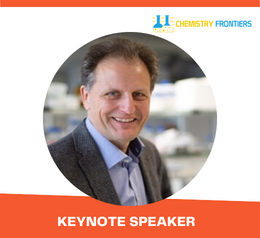Scholars
Frontiers in Chemistry Forum
THEME: "Excellence and Innovation in Chemistry"
 20-21 Jun 2022
20-21 Jun 2022  NH Potsdam, Berlin, Germany & Online
NH Potsdam, Berlin, Germany & Online THEME: "Excellence and Innovation in Chemistry"
 20-21 Jun 2022
20-21 Jun 2022  NH Potsdam, Berlin, Germany & Online
NH Potsdam, Berlin, Germany & Online 
CEO, leadXpro AG, Switzerland
Title: Structure-based drug discovery enabled for membrane protein targets
Michael Hennig studied Physics and Biochemistry, received the Ph.D. in structural biology at EMBL Hamburg, and the Charité, Humboldt University Berlin, Germany. It followed two years postdoc work at the Biozentrum, University of Basel, Switzerland. He is author of more than 80 scientific peer reviewed paper and, since 2011, guest professor in structural biology at the University of Basel. He worked 20 years in pharmaceutical industry at Roche, Basel, Switzerland in various positions and finally Global Head and Principle Leader of discovery technologies with responsibility for structure-based drug discovery, protein science, assay development and HTS, Roche corporate compound library, stem cell platform and analytical physical methods. In 2015, he co-founded leadXpro, a corporation dedicated to structure-based drug discovery for membrane protein targets (GPCR’s, Ion-channels, Transporter) and utilizing most advanced technologies such as the X-ray free electron laser (at PSI, SwissFEL) and cryo-electron microscopy (at University of Basel, cryo-EM).
Integral membrane proteins suchg as GPCR’s, ion-channels or transporters are drug targets for more than 60% of all approved drugs. Structure based drug discovery on soluble proteins is managed well within the project timelines and portfolio changes in pharmaceutical industry, but transmembrane proteins are still underexplored because of their challenges to be expressed, purified and made them work for high resolution structure determination and ligand characterization by biophysical methods.
The presentation includes recent advances in the technologies and their application to relevant drug targets.
Construct engineering, application of in meso in situ serial X-ray crystallography (IMISX) is exemplified with the GPCR structure of CCR2 in complex with an antagonist ligand. This study is combined with detailed binding characterization using grating-coupled interferometry (GCI, Creoptix) to facilitate drug design with binding kinetic, affinity. Furthermore, the crosstalk between allosteric and orthosteric ligand binding could be investigated.
The structure of the human TRPV4 ion-channel with bound small molecule agonist shows activation of the channel opening with a significant structural change enabling direct observation of agonist pharmacology by high resolution cryo-EM analysis. Next example is LPTDE, a clinically validated antibiotics drug target. Due to limited size of 120 kDa and the monomeric ?-sheet transmembrane architecture, the leadXpro proprietary tool of Pro-Macrobodies was essential for the successful EM structure at 2.9 A resolution.
The outlook at future perspectives includes further advances in cryo-EM and the application of serial X-ray crystallography using femtosecond pulsed Free Electron Lasers (FEL) for determination of room temperature structures and observation of structural dynamic of ligand binding and associated conformational changes. All new developments in structural biology will further enhance the impact to the design of candidate drug compounds.